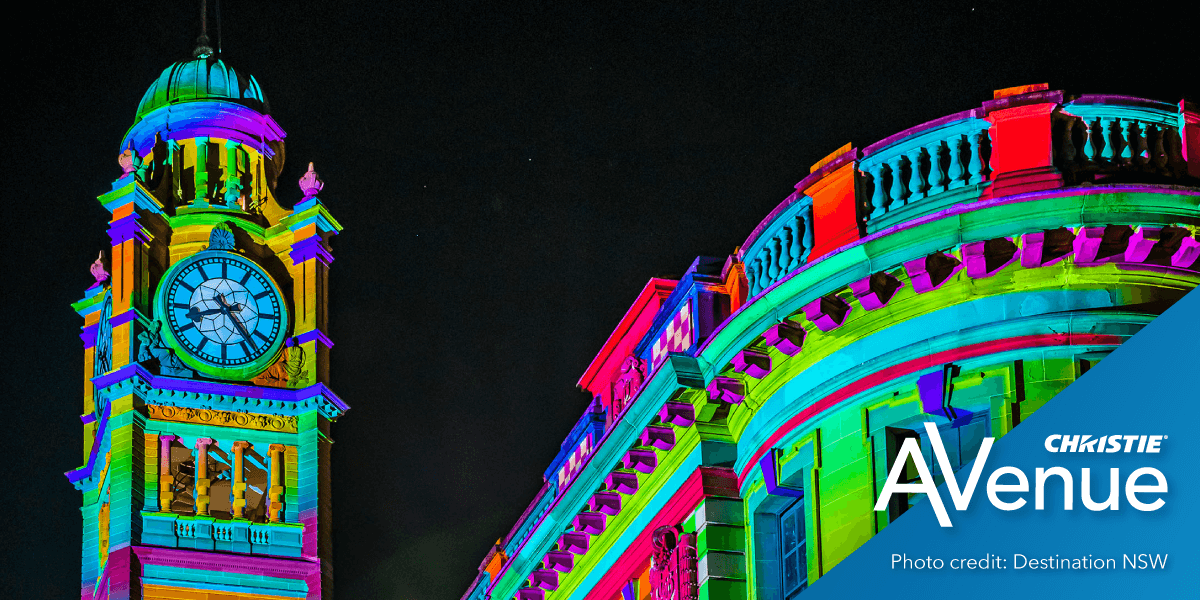Buildings as actors. Talking to Peter Milne, The Electric Canvas

When AVenue caught up with Peter Milne, managing director of The Electric Canvas, it was 7:30 pm on a working day that had started at 3:30 am. The AV business, it would seem, is as compelling as it has ever been. But then again Peter’s one of those gently spoken enthusiasts who sees time as just another obstacle to overcome in the pursuit of perfection.
Ask him why that is, though, and he pauses. “Well, I’m captivated with what’s now called projection mapping — which we used to call architectural projection — because it allows you to draw attention to the beauty of architecture. And it can do so in settings people pass through every day that they’d normally never pay attention to. But once we encounter the same place transformed by architectural projection, we never look at it the same way again. Whether the building is in Modern, Brutalist, Art Deco, or Colonial style, there’s always magic to capture.”
Expanding opportunities
And Peter should know. The Electric Canvas has become a master of projection mapping set-pieces, working on Vivid Sydney, Enlighten Canberra, and opening ceremonies for two Winter Olympics, three Commonwealth Games, as well as Asian and South-East Asian Games. Many of these open-air gatherings are in public spaces where the architecture — be it a civic building or a cathedral — plays a pivotal role. Peter says his technical and artistic journey begins with that structure. “If you use the building merely as a screen, you’ll fail before you start. Instead, you must consider it as the lead actor in your story. And the more difficult that leading actor is, in terms of architecture and technical challenges, the harder your creativity has to work to make it shine. For example, we’ll light our “actor” from all angles, for people walking around a corner and not just the people sitting directly in front. It’s a different approach, and once you do it, it expands your creative opportunities.”
Canberra
Canberra is Australia’s capital and one of the few purpose-built from-the-ground-up cities. That gives it a certain elegance, with every street and lamppost positioned just so. But in the wrong hands, there’s a danger that elegance could slip into sterility and that the city could become a mere projection screen. So while Peter’s technical challenges here may be fewer — less ambient light, nice clear projection throws — Peter says the creative challenges are many. “Canberra is a fantastic place to work. In the Parliamentary Zone, you have Parliament House, Old Parliament House now the Museum of Australian democracy, the National Science Center – Questacon, the National Portrait Gallery, the National Library of Australia, and the National Gallery.
All are significant institutions with very different architecture. We do six buildings every year, and we’ve just finished our 11th year. By taking our building-as-actor approach, we’ve managed to keep things fresh all that while. Had we not — had we just treated them as screens — I think we’d have become jaded, and so would the shows.”
Manufacturers matter
The enthusiastic involvement of manufacturers matters too. “We talk to Christie regularly, sharing stories when we use the product in ways that are out of the ordinary or unusual. They’ve always listened to our needs and I think you can see that in high brightness projectors like the 4K40-RGB.”
Combine that tech with Peter’s insight that all gathering places are fundamentally characters with stories to tell, and you’ve achieved something very special indeed.






